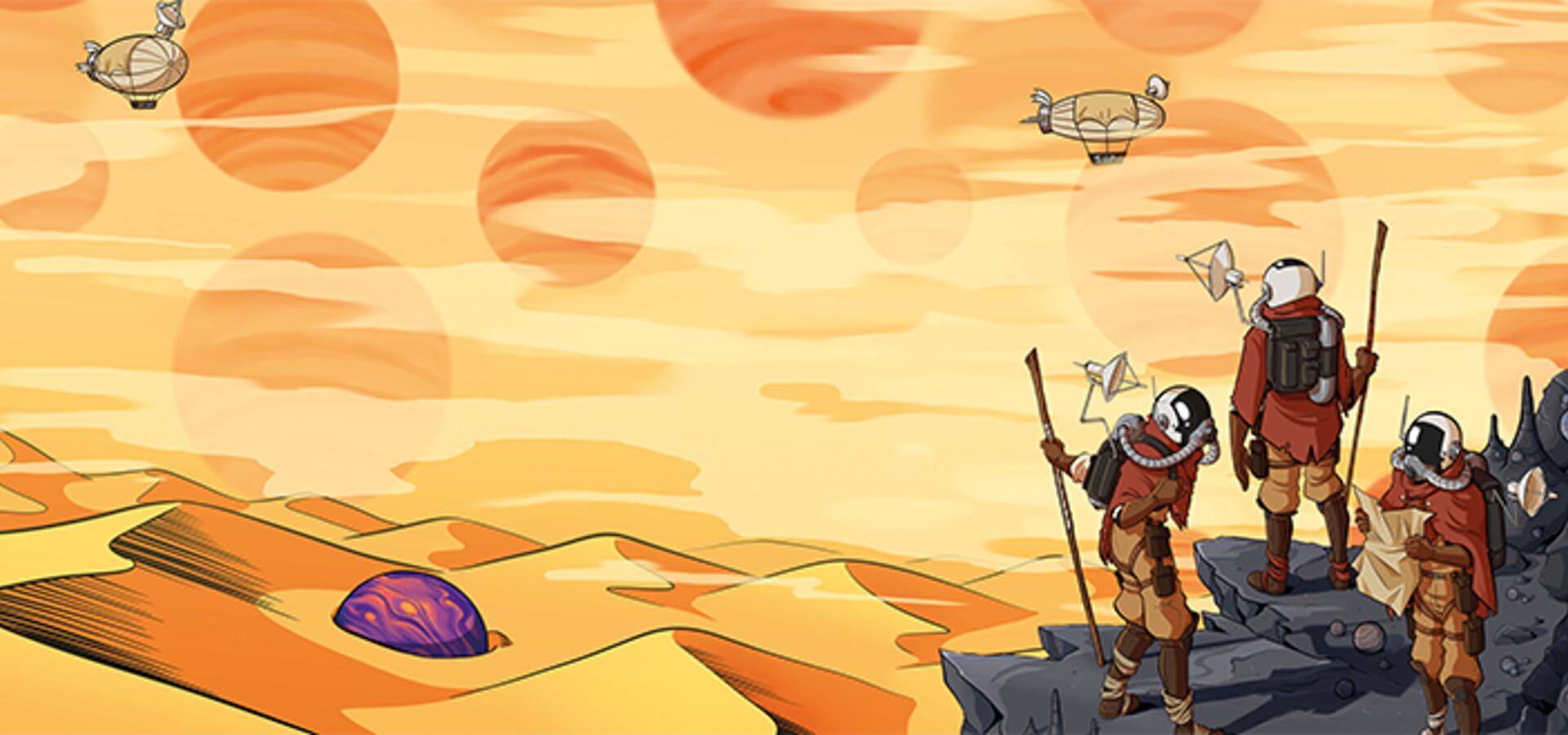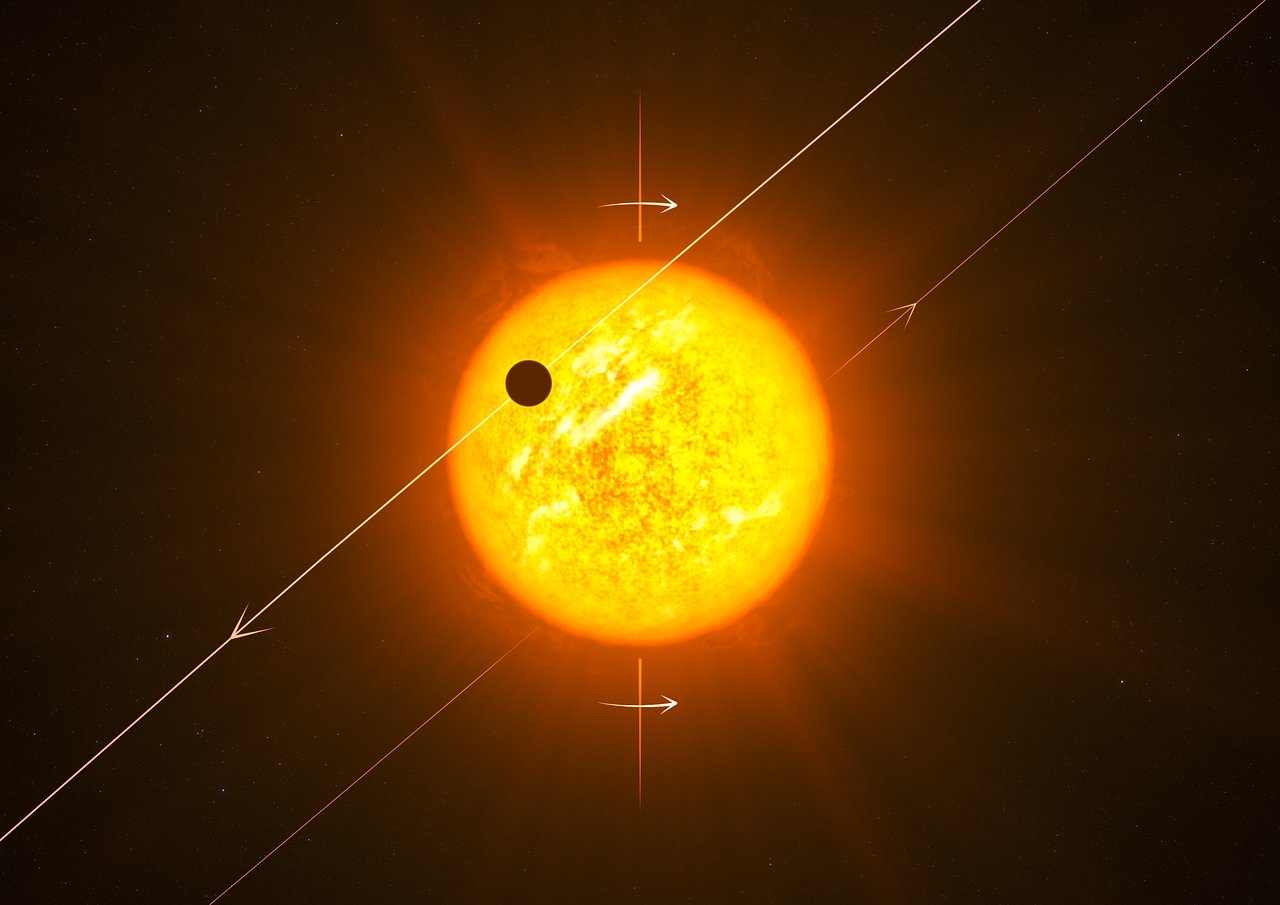
Where did all the Neptunes go?
How HARPS is shedding light on an exoplanetary mystery
- Why there are few Neptune-sized exoplanets orbiting very close to other stars
- Why not all exoplanets orbit their stars in an orderly fashion
- How astronomers can work out the 3D shapes of the orbits of exoplanets
Astronomers have found thousands of planets that orbit around stars other than the Sun. While observing these exoplanets, they noticed an odd pattern: planets orbiting very close to their host star are either small rocky worlds like Earth or giant gas planets like Jupiter; mysteriously, few of them have intermediate sizes similar to Neptune’s. In this blog post we follow a team of astronomers who tried to solve this exoplanetary mystery.
Banner image © Elsa Bersier - CFPArts / ESBDi Genève
Since the first detection of an exoplanet in 1992, astronomers have catalogued over 5000 more. They found that exoplanetary systems can be very different from our own Solar System.
“Who might have thought that, for instance, planets twice the size of Jupiter could live so close to their stars that they lose thousands of tons of their atmosphere every second?” reflects Omar Attia, a PhD student at the University of Geneva, Switzerland and co-author of study on exoplanets orbiting close to their star published in Astronomy & Astrophysics earlier this year. The wide variety of exoplanetary systems intrigued him: “I realised that observing exoplanets brings a direct insight into the strange nature of the Universe.“
One of the strange features of exoplanetary systems has to do with the size of exoplanets that orbit very close to their host star. In this region, astronomers have found many small rocky planets like Earth and gas giants like Jupiter, but only a few intermediate sized planets like Neptune. Astronomers dubbed the lack of such Neptune-sized exoplanets the “Neptune desert”. This does not refer to an actual desert on Neptune, but to a lack of planets of this size close to their host star.
The cause of the Neptune desert is a mystery. It seems that some kind of mechanism prevents Neptune-sized planets from orbiting very close to their host stars. If astronomers could solve this problem, they would have a deeper understanding of how planetary systems form and evolve. This would, in turn, teach us what type of planetary systems can exist around the hundred of billions of stars in the Milky Way, and crucially how unique (or not) our own Solar System is among them.
Vincent Bourrier, assistant professor at the University of Geneva and first author of the study, set out to solve this mystery. He is a member of the PlanetS National Centre of Competence in Research in Switzerland, and has a history with exoplanets. “I participated in the first detection of a Neptune-sized planet losing its atmosphere a few years ago,” he explains. “My simulations showed that this planet, located at the border of the Neptune desert, was eroding much faster than expected.” This could explain why there are so few of these planets very close to their stars: as they lose their atmosphere they can end up becoming smaller bodies.
When Bourrier studied the orbit of this Neptune-sized planet around its host star he found that it moved in a highly unusual way. All planets in our Solar System orbit in nearly the same plane around the Sun, and in the same direction. Moreover, the Sun itself also spins around its own axis, and the orbital motion of the planets is aligned with this rotation: none of the planets moves backwards nor in a highly inclined orbit relative to the Sun’s equator. This is due to the fact that both the Sun and the planets formed out of the collapse of a rotating nebular cloud. This common orbital plane is in fact a ubiquitous feature in most planetary systems.

But something had disrupted the Neptune-sized planet that Bourrier studied, making it leave the orbital plane where it was formed. Could this misaligned orbit be linked to the general lack of Neptune-sized planets close to their stars?
One single planet is not enough to establish a trend, though. Therefore, Bourrier, Attia and their colleagues set out to study the orbital structure of other exoplanets living in the vicinity of the Neptune desert, to see if their orbits were also highly misaligned.
Finding misaligned orbits
The two most common techniques to detect exoplanets are the transit method and the radial velocity method. The transit method measures the dimming of a star when an orbiting planet passes in front of it. The radial velocity method on the other hand uses spectroscopy to measure periodic changes in the velocity of a star caused by the gravitational tug of a planet orbiting around it.
These two techniques can tell us many properties of an exoplanet such its size, mass, distance to its host star and orbital period, but not how inclined the orbit is relative to the star’s equator. This requires a more sophisticated trick called the Rossiter-McLaughlin method which, in a way, combines the other two methods. As an exoplanet moves in front of the star, it will sequentially block either the part of the star rotating towards or away from us, changing the spectrum of the star in subtle ways that allow astronomers to work out the 3D shape of the orbit, as illustrated in the animation below.
One of the telescopes that Bourrier’s team used was the ESO 3.6-metre telescope at La Silla Observatory in Chile. This telescope hosts the High Accuracy Radial velocity Planet Searcher (HARPS), a sophisticated spectrograph and one of the premier instruments in the world for studying exoplanets. It can detect minute changes in stellar spectral lines, exactly what the team needed.
With the aid of HARPS and other instruments worldwide, Bourrier and his team measured the orbital alignment of 12 exoplanets near the Neptune desert. They found that 9 of them (a staggering 75%) had orbits that were highly tilted relative to the equatorial plane defined by the rotation of the star. This is a larger incidence of misaligned orbits than for other planets outside of the Neptune desert.
Wandering planets
Planets don’t always orbit their star at the same distance where they were born. “A star and the planets orbiting around it are formed from the same material, which is a mix of gas and dust”, explains Attia. “In the system's infancy, the remaining material that was not used to form planets settles in a disc around the star, which perturbs the young planets’ orbits and makes them migrate until they reach their final position.” Gravitational interactions between the star and the planet can also alter the orbit, as can close encounters with other bodies in the stellar system. This may even have happened in our own Solar System.
Neptunes that migrated close to their star early on lost their atmosphere quickly, leaving smaller bodies behind. “Neptunes at the border of the desert likely survived thanks to a delayed migration and erosion,” explains Bourrier, and the fact that their orbits are so misaligned tells us this migration happened via some disruptive process and not in a smooth way.
Although these new results are important, there is nevertheless more work to be done to fully solve the mystery of the Neptune desert. In particular, the HARPS measurements are not sensitive enough to determine if low-mass planets close to the desert undergo a similarly disruptive migration. To find out, the team has been awarded observing time with another one of ESO’s flagship planetary hunting instruments: the Echelle SPectrograph for Rocky Exoplanet and Stable Spectroscopic Observations (ESPRESSO).
ESPRESSO is attached to ESO’s Very Large Telescope at Paranal Observatory in Chile, and it can measure radial velocity changes as small as 10 cm/s, similar to the tug the Earth exerts on the Sun. “ESPRESSO will allow us to study the orbital architectures of smaller planets on the low-mass end of the desert, and to determine whether they share similarly misaligned architectures,” says Bourrier.
Moreover, since the VLT’s 8 m mirrors collect 5 times more light than the 3.6 m telescope, ESPRESSO will allow them to observe fainter stars than with HARPS and therefore study many more of them. The team plans to observe 58 transiting Neptunes in 36 nights over the coming 2 years, and this larger sample of planetary systems will yield more robust conclusions about the mechanisms responsible for the Neptune desert.
Numbers in this article
| 5483 | Exoplanets confirmed as of August 2023 |
| 75% | Hot Neptune-sized planets with misaligned orbits |
Biography Jonas Enander
Jonas Enander was a science communication intern at ESO. He has a PhD in physics from Stockholm University. After doing postdoctoral research in cosmology and astrophysics at the Karlsruhe Institute of Technology in Germany, he switched career to science writing and outreach.

